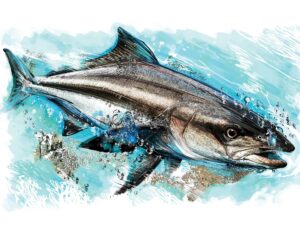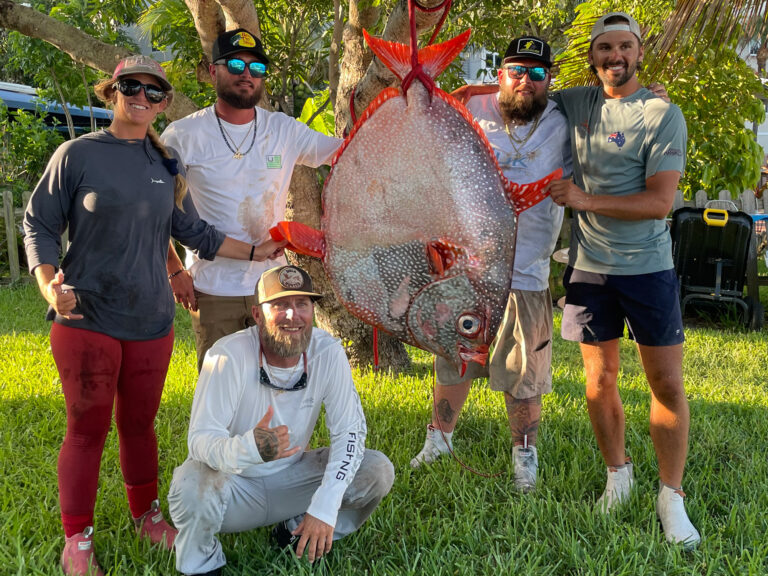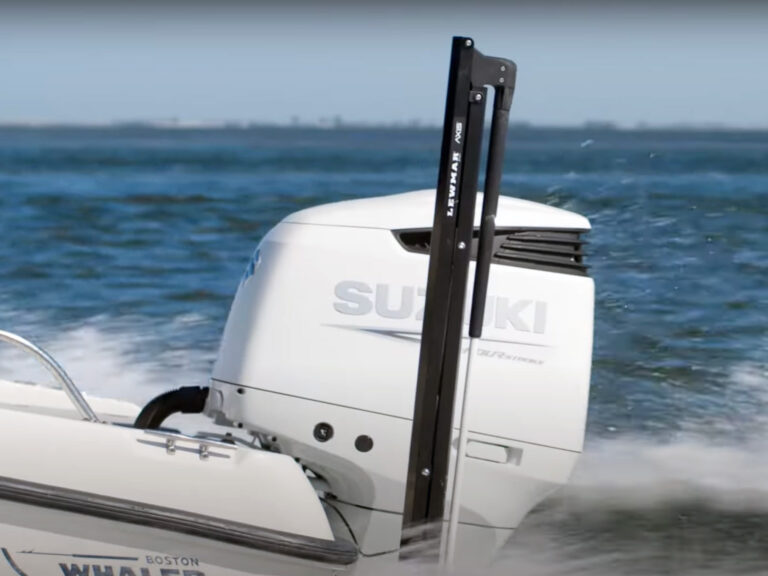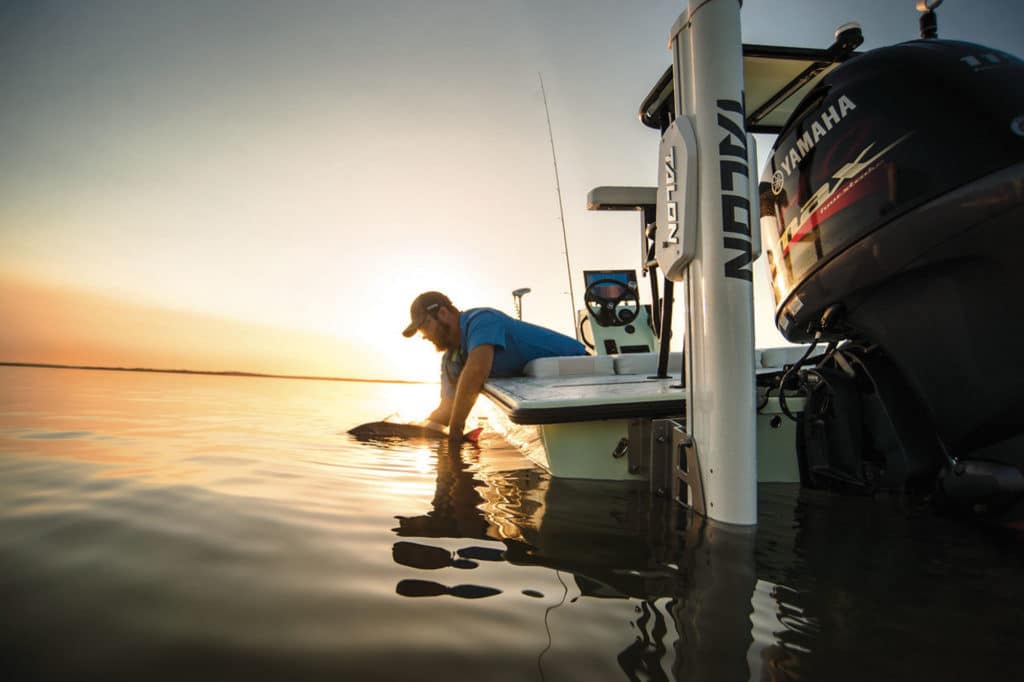
One fateful day more than two decades ago, John Oliverio spotted a skittish school of redfish on a flat in Florida’s Sarasota Bay. Dropping a trolling motor might have proved too noisy, so he planned to carefully anchor his bay boat in position to intercept the fish. But when the anchor thudded into the marl, the school bolted.
“There’s got to be a better way,” Oliverio thought. And then he set to work using a set of Lego bricks (yes, Lego) to brainstorm a device that could quietly hold a boat in position without the use of a conventional anchor. That design and the Tampa-based company that Oliverio founded to engineer and build Power-Pole would change shallow-water angling forever.
New Advancements
Since that time, the Power-Pole has grown to include three main lines of Oliverio’s shallow-water-anchoring system, along with a host of related accessories. Not to be outdone, Minn Kota entered the market with the Talon series of shallow-water anchors in 2011.

In salt water, anglers use shallow-water anchors largely on bay boats and hybrids, but also on some flats skiffs and Texas sleds. These systems mount on the transom and incorporate a composite spike that can be driven into bottom material such as mud or sand.
Both companies make their anchors for saltwater use with high-strength powder-coated aluminum construction, sealed electronics, corrosion-resistant composite materials and stainless-steel hardware. Power-Pole employs a hinged articulating arm driven by an electro-hydraulic system to deploy and retrieve the spike, while the Talon is all electric and telescopes straight up and down.
Power-Pole would argue that its system has a longer track record of success and presents a lower profile when stowed, while Minn Kota points out that its Talon, when deployed, presents less of an obstacle in the water while fighting a fish.
Both brands continue to grow the versatility of shallow-water anchors, while also developing features that make them more durable and easier to use.
Greater Depth
For inshore anglers who want to fish waters as deep as 10 feet or more, Power-Pole and Minn Kota have developed models that extend deeper than the earlier 8-foot anchors.
For example, Power-Pole’s top-of-the-line Blade series includes a 10-foot model, as well as an 8-footer. Talon models extend to 10, 12 and 15 feet, in addition to 8 feet.
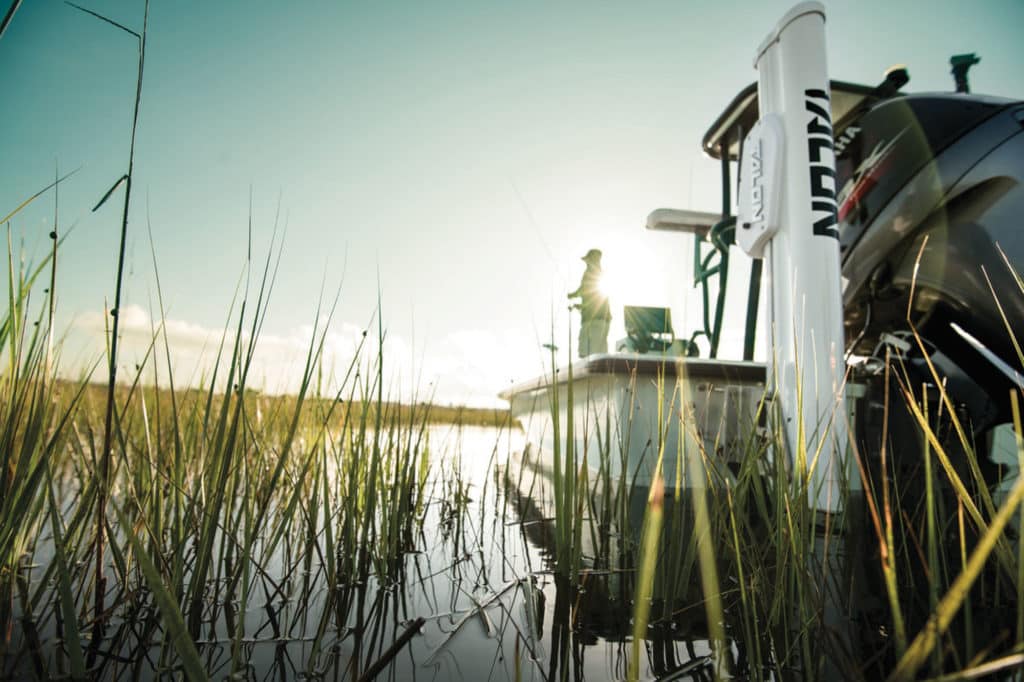
Still, 8-foot models remain among the most popular. “Currently, the 8-foot outsells the 10-foot -models in the Power-Pole Blade series,” says Curt Hill, advertising manager for JL Marine systems, the parent company of Power-Pole.
Adjustable Pressure
“Talon engineers have incorporated a unique feature that lets you select from two additional anchor settings, in addition to the standard medium pressure for setting the spike, based on the bottom composition and wind conditions,” says Adam Knowles, Minn Kota’s associate brand manager.
Rough-water mode automatically forces the spike deeper into the mud or sand when deployed to help hold your position when it’s windy and the water is choppy. Soft-bottom mode eases up the pressure to keep from plunging the spike too deep in silty bottoms.
Easier Mounting
Installation methods for shallow-water anchors abound; many of them eliminate the need to drill holes in the boat. In addition to direct-to-transom mounts, both Power-Pole and Talon offer a variety of adapter plates that can bolt to an outboard-engine bracket. Others can bolt to jack plates. Different shapes are available to suit various transom configurations.
Two of a Kind
A shallow-water anchor works great for preventing a boat from drifting, but it does not prevent a boat from spinning with the wind and current.
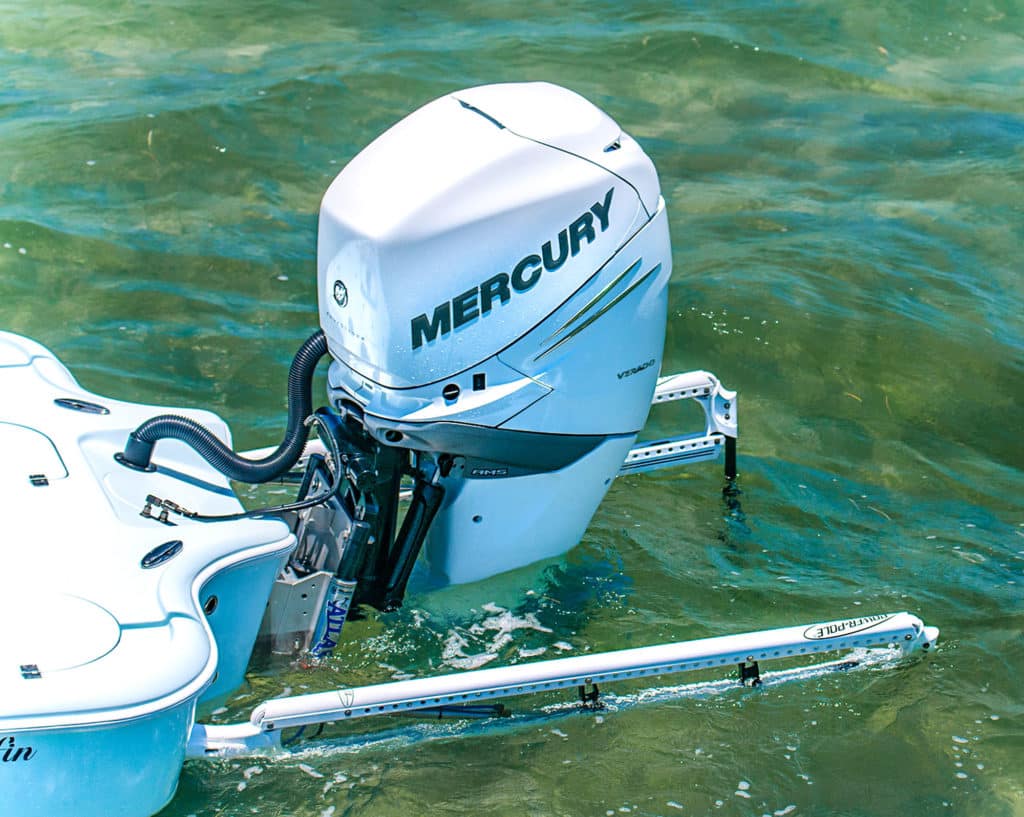
To keep a boat pointing in a specific direction—say, for example, parallel to a shoreline—many bay-boat owners now use two shallow-water anchors. Once deployed, anchors mounted on each side of the transom can overcome the influence of wind and current to secure the boat at any angle.
Drive-Off Protection
Let’s face it: Boating anglers will occasionally forget to retrieve their shallow-water anchors before driving away. What happens when this occurs? Fear not. Power-Pole and Talon feature built-in “drive-off” protection features.
Power-Pole’s drive-off protection system includes a relief valve that bleeds off hydraulic pressure when the stern of the boat squats. It prevents damage to the Power-Pole while preserving its functionality for the next spot.
Talon, on the other hand, features an Auto Alarm that emits a tone each time you turn the ignition key to the “on” position when the anchor is not retracted. That said, taking off with the Talon in the deployed position could cause damage to your anchor or boat.
Deployment Options
Both Power-Pole and Talon offer several ways to control their respective anchors. Power-Pole offers three wireless switches, including a dash switch, fob and foot switch—all using the company’s C-Monster onboard wireless-communications technology. “Wireless switches make installation super easy,” Hill points out.

Power-Pole anchors can also be networked with Lowrance or Simrad multifunction displays for touchscreen control. Finally, there’s a hard-wire switch on the Power-Pole hydraulic pump belowdecks.
“Talon offers an impressive number of control choices,” Knowles says. These include a wireless fob, wireless foot switch, Minn Kota iPilot wireless remotes and even a Talon mobile app. You can also network the Talon with a Humminbird MFD for control from the touchscreen, or just use the control panel on the Talon itself.
Keeping Quiet
Oliverio’s original idea focused on anchoring as quietly as possible, and Power-Pole has continued that quest with its speed-adjustable feature. “The deployment speed is adjustable via the C-Monster mobile app,” Hill explains. “The slower the speed, the quieter the anchor motor.
“Any speed below 60 percent of full speed is very quiet. However, a setting of 70 percent is a good compromise between speed and quietness.”
Power-Pole’s Blade series also offers a “soft-close” feature in retrieval mode. “The anchor motor slows down just before the arm folds up completely to prevent slamming and spooking fish,” Hill says.
Lower Profile
On some inshore fishing boats, a shallow-water anchor (particularly a 10- to 15-foot model) can represent the tallest piece of onboard equipment, one that can interfere with passage under low bridges and mangrove tunnels in backwater creeks, not to mention garage doors.
Read Next: Inshore/Coastal: 2019 Boat Buyers Guide
To help create a lower profile, a Power-Pole can be partially deployed, then raised again once the boat has passed underneath. For Talon, an optional bracket lets you manually fold the anchor forward to the deck to temporarily lower your boat’s profile.
Color-Coordinated
Today, outboards come in different colors to complement a boat’s color scheme, and so do shallow-water anchors. Power-Pole’s Blade series comes in white, red, blue and black powder-coated finishes, with retail prices starting at $1,999.99.
Talon offers a wide range of color combinations, such as red/black, blue/black, silver/black and silver/white, as well as all white and all black. Prices start at $1,899.99.
John Oliverio might not have imagined such transom candy, but his vision and drive for developing a better way to anchor has certainly made life sweeter for shallow-water anglers.




